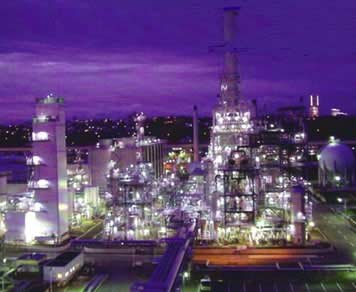It's largely escaped notice, but there's already a dozen or so coal-to-liquids plants in various stages of development around the country.
While most are years away from construction, supporters of converting coal to motor fuels say at least some are a certainty , even if Congress doesn't approve incentives sought by coal-to-liquids supporters. Yet supporters consider some form of subsidy vital if the nation is going to build enough coal to liquid plants to dent its reliance on foreign oil.
"You're going to have a coal-to-liquds industry in the United States," said John Ward, vice president for marketing and government relations for Headwaters Inc.
Among other things, the South Jordan, Utah-based company is working on a coal-to-gasoline plant proposed for North Dakota and researching the feasibility of coal-to-liquids for Pittsburgh-based Consol Energy. "The question is how fast will it happen," he said.
One plant is fairly far along. Los Angeles-based Rentech Inc. bought a natural gas-fed fertilizer plant in East Dubuque, Ill., and hopes to convert to using coal by the end of 2009 or 2010. Production would start low , 920 tons of fertilizer and 1,800 barrels of diesel a day.
That's at once a drop in the bucket compared with the nation's energy use and, to the industry's way of thinking, a big step in the right direction. Rentech Chief Executive Hunt Ramsbottom and others figure at least one of several larger proposed plants will be built.
The coal industry, which is holding a conference on the subject Tuesday and Wednesday in Beckley, and coal-state politicians in particular say the nation can't afford to patiently wait for small developers like the Rentechs of the world to build plants on their own or in conjunction with coal companies including St. Louis-based Peabody Energy, the nation's largest producer.
But so far the notion hasn't gotten very far in Washington, and Gov. Joe Manchin senses a lack of commitment.
"There's not a concerted effort to be truly energy independent," he said. "How are you going to get us from A to B and still be a world superpower?"
Ward and Ramsbottom say the industry needs help to build more than a few plants.
"The answer is Wall Street needs it," Ramsbottom said.
Supporters are trying to frame their argument around national security. Using domestic coal would reduce dependence on imported oil from unstable parts of the world, they say.
"It has the potential to be a meaningful supply of fuel that would take the price off of gasoline and diesel fuel and would take the dependence down on the Mideast." said Don Blankenship, chief executive of Massey Energy Co., the nation's fourth-largest coal producer by revenue.
Environmentalists, on the other hand, contend conservation and energy efficiency would do the same thing. And they argue coal to liquids has numerous other problems: double the greenhouse gases of oil refining, consumption of vast quantities of water and increased coal production.
"Why in heaven's name would we be subsidizing anything that's giving double the greenhouse gases?" said Vivian Stockman of the Ohio Valley Environmental Coalition. "Just the whole idea of it seems absolutely nuts ... It's basically a way to prop up the coal industry and give them more subsidies and hold people economic hostage."
Ramsbottom and others contend they'll be able to reduce overall carbon dioxide emissions by capturing the gas and selling it to oil producers to extend the life of aging wells, among other things.
"We'll be able to lower the carbon footprint," Ramsbottom said. "As long as we can get three or four off the ground quickly."
Blankenship says the industry is fighting a lack of understanding. "People have an opinion without the discomfort of actually studying the facts," he said.
Blankenship maintains there's no environmental issue.
"It actually increases your pollution and decreases safety not to do coal to liquids," he said. "The places that we're buying our products from don't care anything about the environment ... It's so backwards I don't really know how to describe it."

